If you’ve been hanging out on Pinterest, YouTube or Instagram, you might have heard about the Bullet Journal, but what you might not know is that a Bullet Journal is quite helpful for people with chronic illness.
If you are anything like me, you collect lovely journals and have a stack of them just waiting to be used. You never know when the need will arise to use a notebook, but when that moment comes, you’ll be ready!
I’ve started and restarted many of them. Giving up on one purpose and then assigning another a few months later. I’m not good at being consistent with things, I seem to have trouble with religiously sitting down with a journal to write thoughts, feelings or prayers. And the same thing applies to my art journals.
The only journal I have had success in maintaining over extended periods of time is the bullet journal. I believe this is because of the way my “bujo” was designed: by me, as needed, and it’s super flexible.
Have you ever tried using a bullet journal?
What Is A Bullet Journal?
A Bullet Journal is more about the system than the book itself. You can use any book or stack of pages, but the way it is set up and used is what makes it a Bullet Journal.
It basically is a journal that holds everything, rather than having different books for different topics or areas of your life, a bullet journal holds it all. That might sound like chaos waiting to happen, but the bullet journal system was designed to keep everything organised and streamlined, and it does!
It includes a key of symbols which are used throughout so that you always know what is done, needs doing or has been moved. It has an index, overview pages, future logs as well as weekly and daily spreads. It also has plenty of place for trackers, lists and brain dumping.
It’s an extremely organised system while remaining completely flexible and even leaves room for creativity – if that’s what you’re after. There’s a reason they have become so popular and the good news is that they are very helpful for people with chronic illness.
Why Use A Bullet Journal?
The beauty of bullet journaling is that your journal is personalised to your needs. Your layouts can change and adapt to your life on a daily or weekly basis as your circumstances require it! Because you start with a blank note book, you get to choose and design the pages you need. It is a very flexible system and eliminates the need for multiple journals. Everything is taken care of in one place.
Types Of Bullet Journal
Generally there are 2 different types of bullet journaling people. I’d categorise them as the minimalists and the artistic. My bujo started out on the minimalist side of things. I didn’t do any elaborate artistic works in mine, it was more about the lists and trackers for me. I only used a pen and some washi tape as dividers and to add some colout. But later, as my health improved and I became more comfortable with the system, I started using it as a creative outlet too, creating more elaborate layouts with themes and decorative art, this can be very relaxing.
As mentioned above, the bullet journal is so flexible, that you can create the pages you need and omit the ones that don’t serve you. Since you’re working in a blank notebook, you create the pages you need. This means that if this week’s schedule is very different to last week’s, you can adjust your spreads accordingly.
They eliminate the need of multiple journals as you can include anything in your bujo and use the indexing system to help you easily find any lists, trackers and collections that you have created. The flexibility is its main attraction in my opinion.
How Can A BuJo Help Me?
Keeping on top of things this way is extremely helpful to me because Myalgic Encephalomyelitis causes incredible cognitive difficulties and I have trouble remembering what I’m doing – even while I’m doing it. I certainly don’t remember things that need to be done or things that have passed.
I initially however also forgot to use the journal sometimes, not sure how to get around that other than carrying it around with me at all times or leaving it open next to me all day, so I see it, and doing my best to form a habit of using it.
Making it look pretty actaully helped me too, who doesn’t like looking at pretty things? I have found that if it’s well decorated I will look at it more frequently.
For the chronically ill, a journal like this can be very useful. Apart from keeping on top of appointments and assessments, having a record of activities and symptoms is helpful for therapy and doctors visits too. I know I often forget what I went there for, having things recorded on paper is a huge help.
You can look back over them and see if there are any behavioural patterns that need addressing. Like a tendency to overdo things or identifying a cause for onset of certain symptoms or flares.
Having a record of meals and related allergic reactions can help to identify triggers to avoid in the future.
When I was still on a lot of pain medication and supplements, I also had a tracker set up for keeping track of that.
If you’re severely ill and find that having unchecked to do lists is more stressful than helpful, you could even use the journal for ta-da lists instead! So instead of writing lists of things you “should” do, make a list at the end of the day of all you have done. Celebrating every tiny victory.
With each page being a blank canvas to work on, the possibilities of a bullet journal are endless.
Planning Ahead In A Bullet Journal
Having a plan for each day, whether my body will be able to actually accomplish those tasks or not, is so beneficial because I go to bed knowing what I want to do tomorrow. I go to sleep excited about the day ahead. This way I wake up with a plan, if my body is up for it, I can get started and make the most of my good hours.
Without a plan, I tend to just float through the day, scrolling through social media, watching Netflix and end up not really doing anything I feel good about. Not doing anything I’m passionate about, nothing that brings me joy.
I prefer to prepare activities the night before, then if I can’t manage them the next day, they get forwarded until I can do them, or cancelled if they weren’t important tasks. And that’s okay! Allowing yourself time to rest and leave things unchecked in the journal is important too. Just because it’s written, doesn’t mean it must be done in spite of your well-being.
Pages You Should Include In Your Bullet Journal
There is a huge variety of pages you can include in your journal, depending on your own needs and interests. I will share some of the most important pages here to help you get set up. You can see all my journal layouts linked further down on this page if you’d like some inspiration.
Index / Contents Pages
- Keeps track of where everything is in your journal
- Dedicate a few pages at the front of your journal to create an index
- Each time you turn to a new page, the first thing you do is add the page number, this number gets added to your index if it contains something important you might want to refer to in the future. (like a holiday packing list or a bucket list)
Yearly Overview / Future Log
- A double page spread to contain the entire year or multiple double page spreads, each containing a few months.
- This is where you can jot items in advance
- Each time you start a new month or week, you can refer back to this spread to see what is upcoming.
Monthly Overview
- A double page spread that contains the entire month in a calendar format.
- The calendar can be one line per day or a block calendar, as long as you can see the whole month at a glance.
Weekly Spreads
- A double page spread that contains the whole week at a glance.
- Days could be arranged as large rectangles, vertically or horizontally, containing enough space to write your to do lists and notes.
- Each day can include some sort of tracker or health related log if you prefer not to create separate pages to track certain things like how many glasses of water you drink.
Additional Pages You Could Include
These are optional pages, you can decide what might be beneficial to you. Remember that your BuJo should simplify your life, not make it more complicated, so be realistic about what you can manage and what you really need or want to keep track of.
- Activity Trackers / Chores
- Mood Tracker / Mental Health Tracker
- Symptom Tracker
- Medicine Tracker
- Prayer List
- Financial Trackers – Savings / Expenses
- Bucket List
- Brain Dump
- Holiday Itinerary / Packing Lists
- Writing Prompts / Ideas
- Wish Lists
- Grocery Lists / Meal Plans / Recipes
- Hydration Tracker / Food Log / Weight Tracker / Exercise Log
- Reading Log / Library Returns / Movie Log
- Schedules / Routines
- Sleep Tracker
- Blog Log / Content Planner / Social Media Stats
- Gift Ideas for loved ones
- Gratitude / One Line A Day Journaling Spread
Things To Schedule Time For
Part of the recovery process is routine. Our bodies respond well to patterns and schedules because our natural biological processes work according to a rhythm and routine as each process influences the next. As I mentioned previously, you must be kind to yourself, so when your body needs rest, listen, when it needs food or hydration or movement, listen. Don’t omit time for self care and me time when setting up your journal.
When living with a chronic illness, apart from tracking the obvious things like activities, appointments, medications and to-do lists, you should create a schedule that includes time for the following:
- Regular Rest Periods: giving your body time to recover and repair after exertion of any kind.
- Something You Enjoy: this is vital when you are stuck indoors alone all day, make time for joy!
- Quiet Time: this is time for reflection, prayer, meditation, gratitude – quiet, alone time to restore calm and peace.
These things might seem like a waste of time or energy, but when struggling with chronic illness, it is vital to take time out regularly. When you think you don’t have time for rest, that’s when you need it the most. You cannot pour from an empty cup.

Pin This Post!
What You Need To Start A Bullet Journal
You don’t need anything extravagant to start bullet journaling. I started with a hardcover, lined notebook from Poundland and a black ballpoint pen. Your journal will evolve over time as you refine the way you use it and uncover what works best for you. A great way to figure out what to get is to read the customer reviews for each item on Amazon. It’s an excellent way to get feedback on items you are unfamiliar with. I will link to my favourite items below too.
Attention: This page contains affiliate links. Thank you so much for your support!
The Notebook
Depending on your needs, you will have to look at page quality. If you’re aiming for minimalist layouts, then you might not need to bother too much about paper quality and any pretty note book will do. But if you’re planning to use markers or fountain pens, you will need thicker paper.
You will have to decide whether you prefer dotted, lined or plain pages too. I like dotted pages because the dot grid is less visible than lines, but still provides the guide needed to make straight lines. Dots also make measuring so much easier for dividing your pages up, no need for a ruler, really.
I love browsing Amazon to see the wide variety of journals available, but here are some of the most popular ones, these have good paper quality and people get quite creative in them. Another common characteristic of these journals is that they lie flat on the table when open, making writing and drawing so much easier.
I use the Lemome journal now (the one on the left) and I absolutely love it. All my pens and markers work well on these pages without bleeding through, except alcohol markers like Sharpies, they tend to bleed through just about any paper. Even gouache paints work well in this journal without causing much warping!
Pens For Writing
I’d say stick with what you love. Journaling should be an enjoyable experience. It should help streamline your life, not make things more complicated. If it’s stressing you out, then you’re doing it wrong! So choose pens that you love writing with, else you’ll just be frustrated.
The Muji gel pens are quite popular, they write very smoothly and don’t bleed, I love mine, but my personal favourites for journaling are the Pilot Frixion pens. They’re also gel pens which means they write beautifully, but they’re erasable which means I can easily erase mistakes or move items to a different day or week in my journal without leaving a horrible mess. The perfect solution when you suffer from brain fog!
Pens For Drawing
If on the other hand you’re looking for drawing pens or fineliners, then the Sakura Pigma Micron pens or the Uniball Unipins are the most popular. They also don’t bleed through. They’re waterproof and fade proof, so can be painted over and won’t fade over time like some other inks do. My personal favourites are the Unipin Fine Liners.
Adding Colour To Your Journal
For colour the journaling world seems to be in love with the Mildliners and the Tombow Dual Brush pens. I don’t have any Mildliners yet, but the Tombows work well, the didn’t even bleed through the thin journal pages of my first cheap notebook which is great. They definitely don’t bleed through the dotted Lemome journal.
Of course if you’re not very creative, but would like some colour in your journal, you can always make use of the huge variety of planner stickers and washi tape available. It makes adding colour so much easier, saving you time.
You might want to get a ruler, pencil and eraser for drawing or planning your layout. There are also a variety of stencil sets you might be interested in if you don’t feel confident drawing things yourself.
Bullet Journal Supplies I Love
Images link to Amazon. *Affiliate links used* Thank you for your support!
Dotted Journal
Fine Liners
Erasable Pens
Blendable Brush Pens
Small Brush Pens
Assorted Washi Tape
Do You Have Any Questions About Bullet Journaling?
I hope this post has made sense of the bullet journal and how it can be beneficial to people with chronic illness. I have found it to be a huge help, particularly because of memory issues. I take it with me to appointments and have all the questions for my doctor written in there as well as their answers for future reference. It really makes managing chronic illness so much easier. The fact that I get to be creative in mine is just a bonus.
Please let me know in the comments if you have any questions or if you have found this post helpful.
Ever-Evolving Bullet Journal Layouts
This page was originally published in 2017, and my Bullet Journal has evolved considerably since then, so do visit some of the pages linked below to see my other layouts. They are listed chronologically, from the first one to the most recent one. I hope they will inspire you to try something new and get creative.
You can find out more about the bullet journal system and the guy who invented it here.
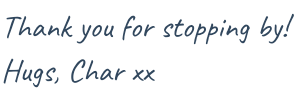
Let’s Stay In Touch
Housebound Lifestyle: Facebook | Instagram | Twitter M.E. Awareness: Facebook | Instagram | Twitter | The ME/CFS Community Vibrant Hope Art: Facebook | Instagram | Twitter Support My Work: Buy My Art | Shop My Favourite ThingsOr if you’d like to send me something, here’s my Amazon Wishlist – Thank you!
![]()
This blog was designed using Thrive Themes.










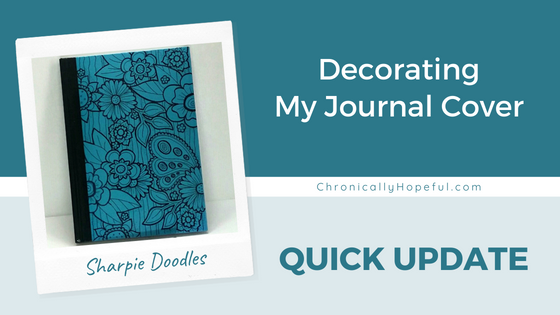



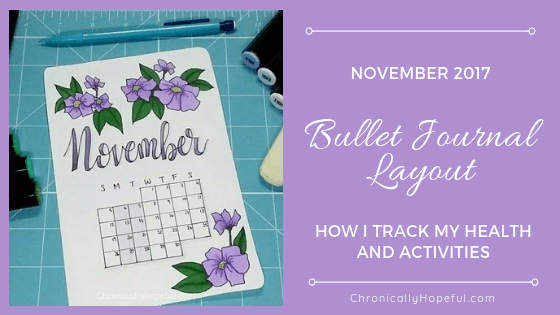

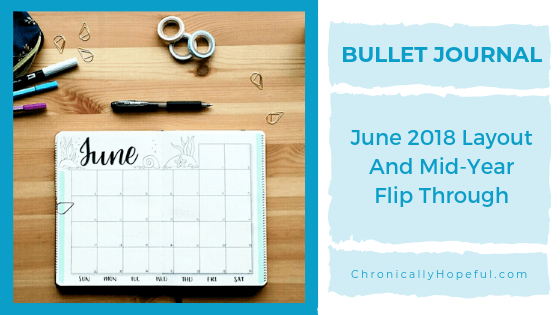
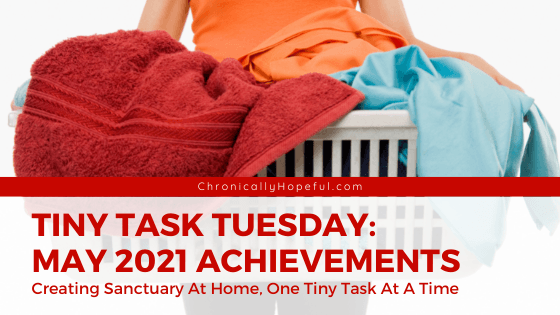

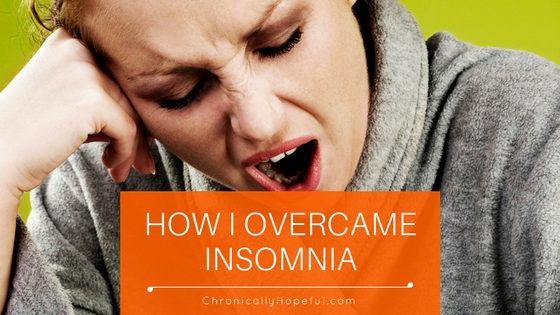




I just found your blog and am anxious to explore it! I am most likely going to be diagnosed with ME/CFS in addition to having fibromyalgia and long term chronic back pain. I’m looking for a way to keep track of my life and the bullet journal looks really good, but complicated. I’m still going to try. I’ll start simple like you did. I don’t work as I’m too sick and am alone weekdays as my husband works full time, though I do have four delightful bad cats that keep me entertained.
Hi Lindy, happy you stopped by! Sorry to hear of your health struggles.
The bullet journal really does make things easier. It can make things very complicated, but then you’re doing it wrong, like I did initially, but it needs to work for you. And that’s what’s great about it, completely flexible and modifiable.
I hope to create very simple “how to” posts soon. My new journal is still on its way, running a tad late this year!
I’m not allowed pets here where I live, I have to be content with my fluffy hot water bunny instead. Lol… Your cats sound like fun!
Great tips.. I would love to start a bullet journal but get sooo overwhelmed.. I also forget, even though it’s right there!!!
It is easy to forget. But I have found that if I make it pretty then I look at it more and that way I forget things less! I also keep it open next to me at all times so it catches my eye throughout the day. I also have a vibration alarm on my wrist watch/activity tracker every hour, so then I know its time to switch activity and look at the journal.
Thank you so much for this. Is nice to see a spoonie doing a bullet journal. Someof the things you mentioned i never thought to track. ?
Glad you enjoyed it. Its such a versatile method, isn’t it?
Amazing spreads. I’m a planner junkie and was diagnosed with CFS 3 years ago but only am now trying to track it. You have given me great ideas and I love the reminder that we need to schedule rest and enjoyment, not just responsibilities. My planner sometimes overwhelms me when it’s all about the stuff I cant do sometimes. I’m doing better at lowering my expectations and accepting that it is ok to not be super woman, but I need to work on refilling my cup.
I’m glad you have found some of these ideas useful. It’s so easy to focus on what has to be done that we often forget about nurturing our own well being too. I hope your journal will help you to create a more balanced routine. And letting go of the things we cannot complete is vital in this journey too.